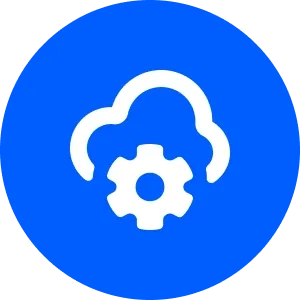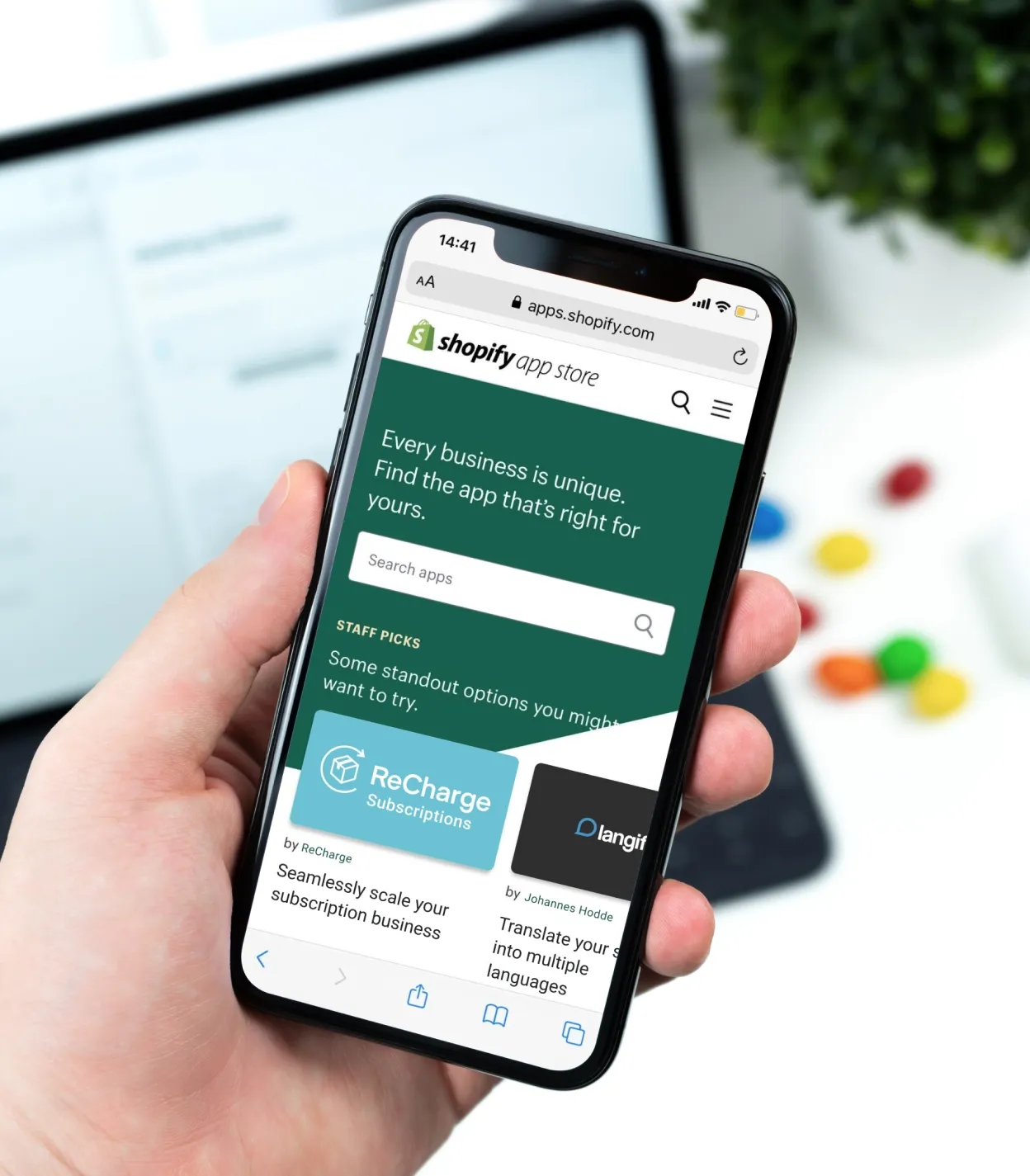
By 2025, the global SaaS (Software as a Service) market is likely to reach over $430 billion, and that’s no surprise. This model of software development, thanks to its cost-effectiveness and customer-focused approach, is very popular among entrepreneurs nowadays, as 86% of startups are ready to invest in SaaS apps in 2022. Indeed, it’s one of the best ways to bring real value to your target market, but it’s also one of the most challenging tasks.
From the initial idea to getting the actual customers, there are many factors involved, and each step has its own challenges. Moreover, like any business idea, creating and launching your own SaaS company requires careful planning and execution.
That’s why we put together this guide on how to build a SaaS business. We’ll walk you through all of the important steps, from forming your idea to getting investors and going public.
What is a software as a service company?
SaaS, or Software as a Service, is a business model that provides software over the Internet. Instead of getting a copy of your product on their computers, users can download and use it online from the server. Providing your service for use on an ongoing basis, the SaaS model is an excellent opportunity for small businesses to start and scale their ideas. That’s why software is considered to be the best option to launch a successful startup business.
SaaS offers a new way of distributing products. You’re not actually selling the product itself — but the opportunity of renting and charging users monthly fees for your software. That’s why there is no lifetime license as you market services via a subscription model, and it’s easy to see whether your users keep finding your software helpful and which features they appreciate the most.
Advantages of starting SaaS business
If you are still wondering if it's a good idea to choose a SaaS model for your business, here are 5 main reasons that might convince you:
Saves you money: Everything happens online, so you won’t need to spend huge sums on setting up an office and buying expensive equipment. You can save thousands on rent, furnishings, and utilities — and invest in learning how to start a SaaS business only.
It’s easy to scale: SaaS products possess scalability, which means that you can do upgrades and downgrades when necessary without the need to make dramatic changes to your business.
Reliable cloud network: As you launch a SaaS company, you can place a server anywhere in the world by choosing the most reliable location for your business needs and knowing that your app will work even if one of the servers goes down.
Secure space: Servers store data safely, as the developers pay close attention to this factor while making a cloud-based app.
Access to more users: SaaS products can be available anywhere, and the only limit is an Internet connection. This factor increases the size of your target audience dramatically.
Types of SaaS products
SaaS solutions have different categories, and depending on what you’re looking for, different approaches may work better for your business. When considering which type of solution to go with, evaluate your project’s needs and consider how much you want control over running your applications.
Here are the most popular types based on specific needs businesses usually have. They might inspire you to start SaaS business on your own.
Customer relationship management (CRM) software
Example: SalesForce
As a SaaS product, CRM improves your sales and marketing techniques. In particular, this software is generally easy to use, gives the customer insight into their behavior and activity on your site or app, and allows you to visualize that data in various ways.
Marketing and email marketing software
Investing in marketing SaaS tools is another way to strengthen your relationship with customers. With a platform like HubSpot, you can better organize your leads and track conversions by having analytics of on-site traffic, landing pages, and form submissions. All these features are extremely useful for optimizing your landing page for conversions which will ultimately drive sales.
When it comes to marketing email campaigns, SaaS solutions can be helpful for such tasks as sending and organizing email content for your subscribers. These tools can also help run A/B tests for different campaign types, like subject lines or delivery times. Using one of these services also frees up valuable time that would otherwise be spent on manual labor in creating opt-in forms, writing emails, and scheduling them out for delivery at specific times.
E-commerce
Example: Shopify
If you want to know how to start a Software as a Service company, e-commerce is the best field to learn. That’s because, among many different types of businesses you can launch, an e-commerce store is one of the easiest and most flexible. On a SaaS platform, you can quickstart your sales, complete the transactions and manage deliveries online.
Enterprise resource planning (ERP)
Example: Oracle Cloud ERP
An ERP system allows you to see all the critical metrics for your enterprise in one place. Also, ERP systems are ideal for streamlining your accounting operations and data, as well as assisting with manufacturing/supply chain management.
Project management software
Example: Jira
A project management software solution is an essential part of any organization, helping you manage the planning, tracking, and reporting. At its most basic level, project management can be simply keeping an organized to-do list. But when processes become more complicated, SaaS solutions can replace papers and physical dashboards.
Accounting software
Example: Quickbooks
A SaaS platform helps you get your books in order by storing and organizing all of your financial data organized in one place. You can use your accounting software for everything from invoicing clients and making payments to generating reports and analyzing performance data.
How to start your own SaaS business: 8 steps

So, a software-as-service (SaaS) company makes its revenue by selling software on a subscription basis, reaching more users, and scaling faster and easier. So what does it take to get one of these companies off the ground and keep it running smoothly? Use these eight steps from our experts’ experience in assisting entrepreneurs and investors in SaaS startups:
- Define the value you bring
- Research the market and your competitors
- Define pricing strategy
- Define MVP
- Design your SaaS product
- Collect Project Requirements
- Find developers and gather a team
- Define the tech stack
Read more about them below to launch your startup development hassle-free and answer how to build a SaaS company at last!
Step 1: Define the value you bring
If you want to know how to make a SaaS business profitable, one of your first tasks is defining what value you bring that customers will want or need. It’s important to ask yourself, “What problem are our customers trying to solve by using your product?”. While answering, make sure there’s a good fit between how you see your product and how it helps users.
That way, when marketing to potential clients and business partners, you can confidently communicate its worth from day one. Anyway, it’s easier to sell people what they need, so search for a problem you can solve and make their life easier. So don’t hesitate to talk with potential customers and other vendors in your space and see what challenges they face.
Step 2: Research the market and your competitors
Once you have an idea for a new business, you need to spend some time researching your competition, industry, and general information about starting a SaaS company. Before spending any more money or energy on your company, make sure that there’s room for another product or service in your market.
To compete in any market, you should understand more about your target audience and ensure you have an idea of what obstacles you might face along the way. Check out sites like Crunchbase and TechCrunch for information on companies already in your space to get started with your research.
Step 3: Define pricing strategy
Once you’ve defined your value and found out what other companies do to deliver the same value, you can set your price. It’s critical to make this decision at this stage so that your further actions go in line with the price you expect customers to pay for your solution.
Your pricing strategy must align with your target customer and your overall mission. If you want lots of customers and know that many people can’t afford your service, it doesn’t make sense to price yourself high. Even if a smaller segment of high-value users might be willing to pay more for top-of-the-line products, it will ultimately lead to having fewer customers at all. However, if you want to deliver an exclusive value to a limited number of users, the decision to increase the price makes sense.
Step 4: Define MVP
The quickest answer on how to start a SaaS startup is “Develop MVP.” A minimal viable product (MVP) is a SaaS app version with a set of basic features for early testers to check and recommend whether or not they need them in a final product. Generally, the MVP is a great way to test the waters and see which good your business idea will bring.
Rely on the user persona, your value, and business limitations while making an MVP. It should contain a solution to the user problem and be realistic to deliver fast. Then, you get in front of actual customers and understand their needs more accurately to polish your services to cater to those needs.
When building an MVP, focus on gathering as much customer feedback as possible while also removing any extra features or extras that may prevent your product from being viable to these customers.
Step 5: Design your SaaS product
After the preliminary steps are completed, you can start visualizing your future SaaS product. At this stage, it’s worth creating a prototype that demonstrates your vision for how customers will use your product. Once you’ve created a prototype, solicit feedback from your potential customers to receive honest and constructive input on its strengths and weaknesses.
The designing step is highly useful to determine the potential drawbacks of your project and see how your product looks. In particular, while designing a prototype, you can refine your vision and uncover any technical or market problems before the development stage starts.
Step 6: Collect project requirements
With an MVP defined and a prototype design, you have the material to gather all the requirements for your product.
In particular, gathering project requirements means having a clear customization plan, a list of options to integrate, metrics to measure success, and the way you’ll address security concerns. Also, the final list depends on users’ preferences. Your software should be flexible to their changes to keep serving your customers well. It’s a good idea to include some potential and specific needs in the list of advanced features you’ll develop after an MVP. This way, your business idea will be helpful and scalable.
The typical process of gathering project requirements includes these steps:
- Determine your business goals and expectations on serving your target audience, solving the problem, and presenting the solution.
- Apply an agile approach for analysis , meaning dividing the process into sprints, setting short-term requirements for each sprint, and planning new sprints based on the information from the previous ones.
- Prioritize the tasks to make things more organized and predictable.
- Document and approve the result for better workflow and transparency.
- Update the results based on the insights you’ll hear during communication and feedback sessions.
If you decide to outsource the development, all of the above will be on the technical partner’s tasks list; this person takes care of all technical documentation and requirements. Usually, project managers and business analysts are assigned for these tasks.
Step 7: Find developers and gather a team
Find developers with experience building SaaS applications and gather them around you as your team. One way to do that is by reaching out directly on LinkedIn, telling them about your idea, and asking if they’d be interested in learning more. Another good option is Clutch, where you can also find the right partner; the main thing here is to pay attention to the company's cases, expertise, as well reviews from previous clients.
However, we recommend referring to an IT company possessing expertise in the SaaS development domain so that you get a high-quality solution.
Step 8: Define the tech stack
It is a final step in the guide on how to create a SaaS company because it is hard to choose the exact technologies for your project without having requirements, a set of basic features, and the design at hand, along with the developers with whom you can discuss this problem. Making the right choice now is critical to the scaling potential of your app.
For your reference, here is the tech stack SaaS companies commonly choose:
Backend programming languages: NodeJS, ROR.
Frontend programming languages: ReactJS, Angular, VueJS, JavaScript, HTML/HTML5, CSS/CSS3.
Database software: Amazon DynamoDB, MongoDB, MySQL, MariaDB, PostgreSQL.
Cloud provider : Amazon Web Services, Azure, Google Cloud platform.
Native app development: iOS, Android using native development, React Native.
API: third-party API integrations such as Google, Twilio, Mailchimp, Auth0.
Here’s the list of the common tech difficulties in building SaaS applications:
Techstack: You can consult a tech specialist to make the right choice.
Scalability: You should consider interface, integrations, two lists of features (basic and advanced), количество одновременных пользователь (нагрузка на систему).
Confidentiality: Make sure you have the right way to deal with sensitive information. For this, you can implement encryption, build a secure payment gateway, and use safe infrastructure services.
Credibility: It’s important to build a trustworthy app without hidden tricks and unpleasant surprises for users. You can improve this parameter with video testimonials, a transparent refund policy, and trial periods.
Integrations: Things like payment processing and social media sharing should work smoothly.
Subscription: Pay close attention to this essential feature in your SaaS product. Your subscription model should have a clear value and be processed smoothly.
How much does it cost? Experience of DigitalSuits
Understandably, before starting a SaaS company, you’ll want to know exactly how much your endeavor will cost. To give you an idea of what’s involved in launching and running a successful SaaS venture, we relied on our expertise in the SaaS development domain to share the development process and prices.
Location
When it comes to development prices, the country makes a difference. The general rule is that developers from the USA and Western Europe will cost you more than their colleagues working in Eastern Europe, especially in Poland and Ukraine, as their developers can provide high-quality solutions for a good price.
In fact, Ukraine was named the #1 offshore software development country in Eastern Europe in 2021. The country is a frequent partner for global IT companies and has great value-for-money when it comes to delivering IT services. Among the main reasons for such a result is the access to one of the largest pools of talent and low rates. Because of the broad demographic, observers frequently list prices for app development in hours, not dollars, as the price will change dramatically.
Ways of hiring
There are a few ways to hire a team: freelance, in-house team, and outsourcing team. For example, you can hire freelancers from Upwork or other freelancing platforms and pay them individually for the tasks delivered. Alternatively, you can hire an in-house team exclusively for your SaaS project, but be ready to pay them regular salaries and buy the necessary equipment.
Among these three models, outsourcing possesses the most advantages. Hiring developers as a dedicated team will save you money without strictly restricting their involvement in the project. Moreover, outsourcing firms have access to tech talents and care about the quality of their services, so the chances you’ll get a great solution from them are really high.
Your project specifics
Notwithstanding the importance of the two factors mentioned above, you should know there are no general rules you can rely on to calculate the final price. Each project is unique, and the scope of work is planned during the discovery phase at the very beginning. Only the set of features, number of integrations, and the overall project complexity can serve as the background for the sum you’ll pay for your SaaS product. Other factors will influence the salary difference for your developers mostly.
To illustrate the idea, we’ll reveal the details of the project we’ve done for one of our clients.
Case study: Ask Porter
Ask Porter is a SaaS platform for property and facilities management, messaging, and cost control. In this digital solution, we’ve applied AI optimization tools to improve customer experience by creating a better service.
Team size: 8. Team lead, 2 backend engineers, 2 frontend engineers, PM, QA, and DevOps. Work done: Backend API, Frontend dashboard, chatbot. Development time: 10 months in total. Backend API — 4 months, Frontend app — 4 months, and a chatbot — 2 months.
By following the 8-step model of building a SaaS company we’ve discovered above, we worked together with the client on bringing value to their customers. In particular, users needed a faster and simpler process of fixing household problems like water and gas leaks and water disposal.
In this situation, a SaaS platform enables the service that instantly takes orders, finds specialists who can address the issue, and tracks the order status online. In the AskPorter app, city residents have received a portal to manage repairs in their houses quickly.
The technologies we used for the solution were:
NodeJS
React
AWS for hosting and DevOps
Auth0
Microsoft Bot Framework
Firebase
Algolia
Twilio Flex
With our solution delivered on time and within budget constraints, Ask Porter has won funding.
How we can help you to build SaaS products
Digital Suits team assists businesses in building SaaS products for their needs. We specialize in developing SaaS solutions and deploying them to the cloud so that startups and mid-sized companies can enter the market in the fastest, wisest, and most cost-effective way.
The set of our SaaS solutions includes:
Landing pages: We build attractive and converting web pages.
Systems for client management (subscriptions) and configurations for the client’s application: Manage your subscriptions easier by billing customers and letting them use different payment integration.
Building applications: We investigate your business needs and develop custom configurations on their basis.
API: We integrate SaaS platforms with relevant applications.
Do you want to know how to set up a SaaS business in practice? Then drop us a message, and we’ll give you a response in a couple of hours! We’re willing to improve your business and develop SaaS solutions that will serve your needs.



































Was this helpful?
0
No comments yet